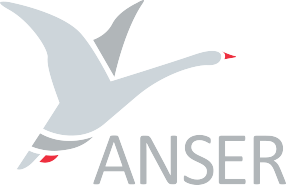Fall Sports Kick Off: A Look at Collarbone Injury Treatments

As the Fall sports season begins, athletes are at increased risk for injuries, including bumps, bruises, and broken bones. Sports medicine and orthopedic professionals are gearing up to help get athletes back to their favorite activities as quickly as possible. One key aspect of this process involves offering minimally invasive and highly effective treatments for various injuries.
Surgery isn’t always necessary, but when it is, finding a specialized surgeon who frequently handles the specific injury is crucial. By consulting with an expert, patients can engage in shared decision-making and explore all available treatment options.
A common injury in both organized sports and recreational activities is a broken collarbone, typically occurring in the middle part of the bone. Many of these clavicle fractures can heal on their own with a sling and time. However, if the bones are misaligned or broken into many pieces, surgery might be the better choice.
For those choosing surgery, there are two primary options: a plate with screws or the Anser Clavicle Pin. It’s essential to discuss these choices with the care team to select the best option aligned with the patient’s value system.
Plates vs. Anser Clavicle Pin
Plates have traditionally been used to fix broken collarbones. However, they have several drawbacks, including bulkiness and potential hardware irritation. In contrast, the Anser Clavicle Pin offers a new, minimally invasive approach. Unlike plates and screws which go on the outside of a fracture, intramedullary (IM) devices are inserted inside of the bone. IM devices are commonly used in orthopedic surgery, but legacy IM devices specific to the clavicle fell short, resulting in a “shot on goal” instead of a “gooooaalll”.
The Anser Clavicle Pin is an intramedullary (IM) device, but that’s where the similarities with the first-generation IM devices end. It is designed with the knowledge that clavicles don’t require absolute stability to heal, but they do need to be realigned and kept at length until secondary bone healing occurs. The result is an elegant and simple solution that is ideal for both patients and surgeons. This innovative device offers several advantages:
- Minimally Invasive: The procedure involves one or two small incisions, reducing the risk of hardware irritation, neuropathy, or noticeable scars.
- Efficient Surgery: The Anser Clavicle Pin is a one-size-fits-all implant, which simplifies the procedure and typically takes about 30 minutes, even for complex fractures.
- Adaptable: It works with any midshaft clavicle fracture pattern, being fixed on both ends of the collarbone and bridging the area where the fracture occurred.
Comparing Recovery
Surgical recovery with the Anser Clavicle Pin generally progresses faster compared to recovery with a sling alone. It is similar to how quickly most surgeons progress a patient after surgery with a plate. Most surgeons will recommend using a sling for the first week or two after surgery. Patients can move their hand, wrist, and elbow right away. Passive and active-assisted shoulder movements may begin around week two, with restrictions on lifting for about six weeks. For more complex fractures, a longer, more cautious recovery period may be advised. Surgeons will work with the individual patient to make a plan that is best for that person and their goals to return to activity.
Making the Right Choice
Every patient and broken collarbone is unique. As patients and surgeons become more knowledgeable about the benefits of minimally invasive surgery, it’s important to include all options in the shared decision-making process, including the Anser Clavicle Pin. As we dive into the 2024 Fall Sports Season, staying informed about the latest orthopedic advancements ensures that athletes can return to their activities safely and efficiently.
